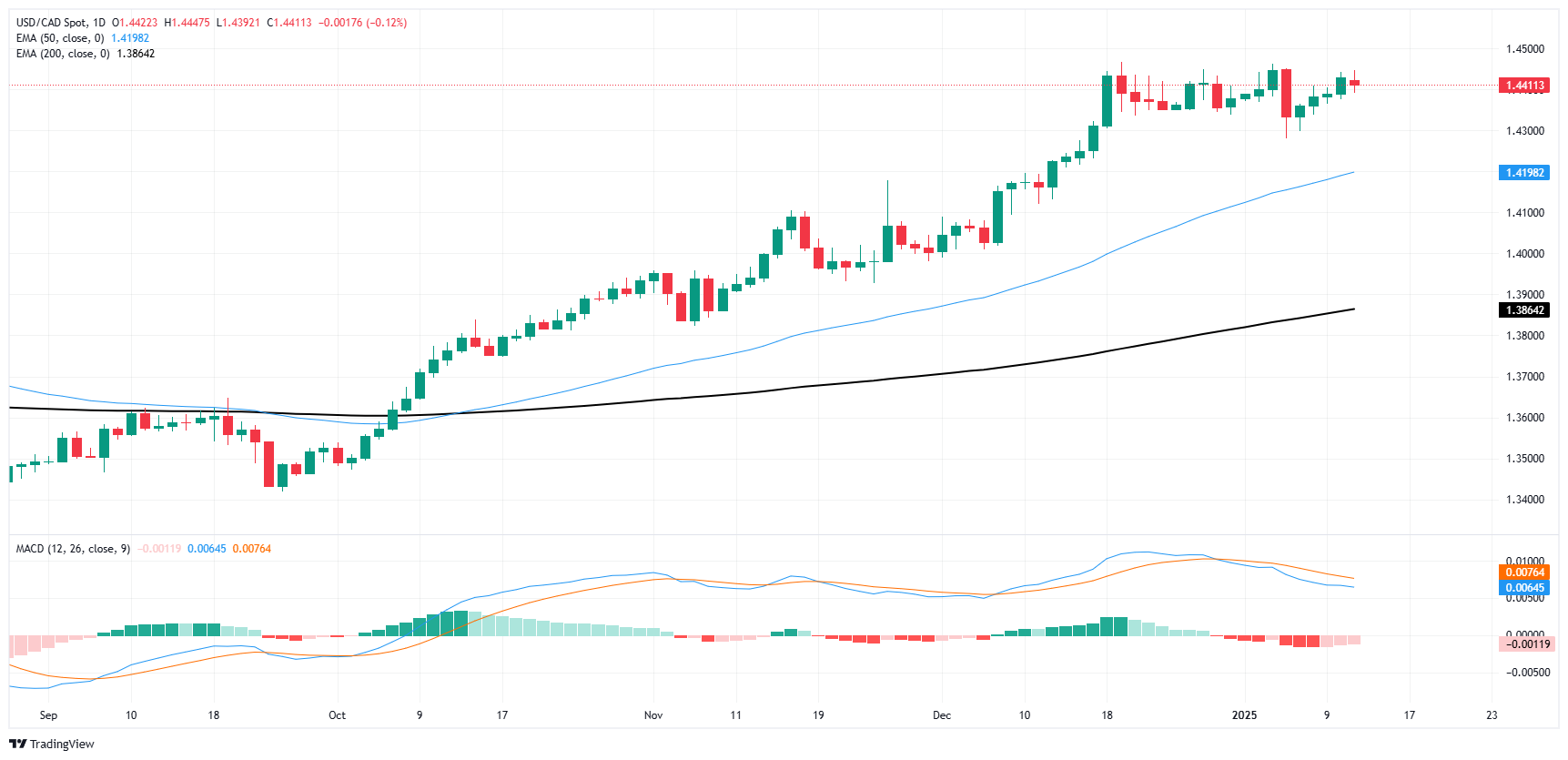Canadian Dollar muddles through a quiet Monday
- The Canadian Dollar (CAD) struggled to find direction on Monday.
- Canada’s labor market printed well above expectations last week.
- The debate facing Loonie traders is whether the BoC will continue to cut rates.
The Canadian Dollar (CAD) continues to tread water near multi-year lows against the US Dollar, with Loonie traders waylaid by a rate-cutting Bank of Canada (BoC) threatening to tip the CAD’s rate differential against the Greenback even further into the low end. Loonie traders are getting a breather after last week’s labor figures on both sides of the 49th parallel, but the BoC’s trajectory on rates is still pointed down at a faster and further pace than the US Federal Reserve (Fed).
It’s a low-tier showing on the Canadian side of the economic calendar this week; Canada printed an upswell in net job additions in December, but now the overall focus of the data docket, and investor attention spans will shift squarely onto US inflation figures throughout the trading week.
Daily digest market movers: Canadian Dollar churns as CAD traders weigh BoC outlook
- The Canadian Dollar flattened on Monday as flows dry up.
- The BoC slashed interest rates five times in 2024, dragging its main reference rate from 5.0% to 3.25%, and more cuts are on the cards in 2025, albeit at a slower pace.
- Meanwhile, the Fed is broadly expected to hold steady on rates for the time being.
- A swath of US inflation data is due this week, keeping investor focus squarely on Greenback flows.
- US inflation pressures are simmering in the background, keeping the Fed at bay.
Canadian Dollar price forecast
As the Canadian Dollar holds on the weak side, USD/CAD is bumping into multi-year highs and churning at the 1.4400 handle. Loonie traders remain unable to push the CAD back into a technical recovery, but further Greenback gains appear to be constrained by wider market flows.
USD/CAD is still buried deep in bull country, with price action holding well north of the 200-day Exponential Moving Average (EMA) rising into 1.3900. The immediate barrier to a Loonie bull run will be USD/CAD dropping back below 1.4300, while an upside break into 1.4500 will set Greenback buyers on the path to another leg higher.
USD/CAD daily chart
Canadian Dollar FAQs
The key factors driving the Canadian Dollar (CAD) are the level of interest rates set by the Bank of Canada (BoC), the price of Oil, Canada’s largest export, the health of its economy, inflation and the Trade Balance, which is the difference between the value of Canada’s exports versus its imports. Other factors include market sentiment – whether investors are taking on more risky assets (risk-on) or seeking safe-havens (risk-off) – with risk-on being CAD-positive. As its largest trading partner, the health of the US economy is also a key factor influencing the Canadian Dollar.
The Bank of Canada (BoC) has a significant influence on the Canadian Dollar by setting the level of interest rates that banks can lend to one another. This influences the level of interest rates for everyone. The main goal of the BoC is to maintain inflation at 1-3% by adjusting interest rates up or down. Relatively higher interest rates tend to be positive for the CAD. The Bank of Canada can also use quantitative easing and tightening to influence credit conditions, with the former CAD-negative and the latter CAD-positive.
The price of Oil is a key factor impacting the value of the Canadian Dollar. Petroleum is Canada’s biggest export, so Oil price tends to have an immediate impact on the CAD value. Generally, if Oil price rises CAD also goes up, as aggregate demand for the currency increases. The opposite is the case if the price of Oil falls. Higher Oil prices also tend to result in a greater likelihood of a positive Trade Balance, which is also supportive of the CAD.
While inflation had always traditionally been thought of as a negative factor for a currency since it lowers the value of money, the opposite has actually been the case in modern times with the relaxation of cross-border capital controls. Higher inflation tends to lead central banks to put up interest rates which attracts more capital inflows from global investors seeking a lucrative place to keep their money. This increases demand for the local currency, which in Canada’s case is the Canadian Dollar.
Macroeconomic data releases gauge the health of the economy and can have an impact on the Canadian Dollar. Indicators such as GDP, Manufacturing and Services PMIs, employment, and consumer sentiment surveys can all influence the direction of the CAD. A strong economy is good for the Canadian Dollar. Not only does it attract more foreign investment but it may encourage the Bank of Canada to put up interest rates, leading to a stronger currency. If economic data is weak, however, the CAD is likely to fall.
